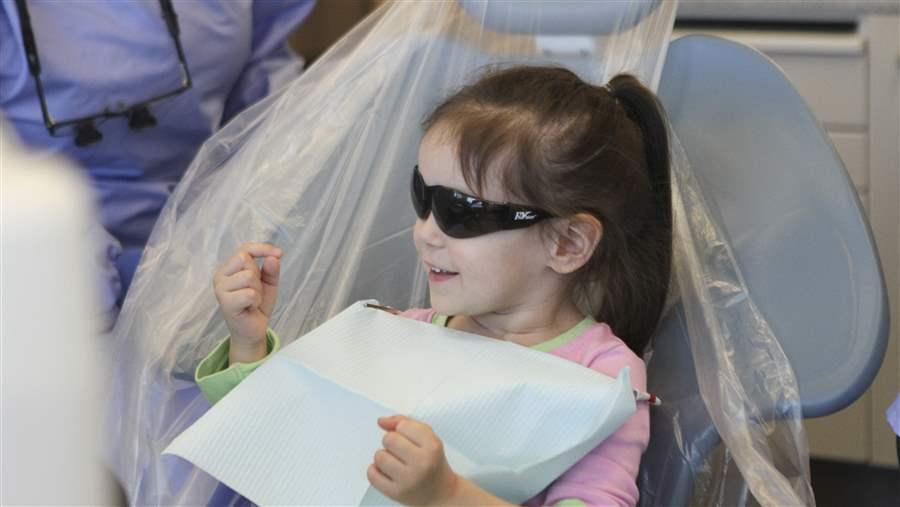Study Finds Dental Therapists Improve Outcomes for Alaska Native Communities
Frequent visits linked to fewer invasive procedures, more preventive care

Dental therapist Roz Ferry treats 3-year-old patient Macy Hukill in Nome's Norton Sound Health Corporation dental clinic.
The Pew Charitable TrustsResidents of Alaska Native communities served frequently by dental therapists had lower rates of tooth extractions and more preventive care than children and adults in communities not receiving these services, according to peer-reviewed research published online in January in the Journal of Public Health Dentistry. The study, led by Donald Chi of the University of Washington Dental School, analyzed outcomes for patients served by the Yukon-Kuskokwim Health Corp. from 2006 to 2015. The health corporation, a part of the Alaska Tribal Health System, provides care for 25,000 Alaska Natives from 58 federally recognized tribes in the state’s Southwest.
The Pew Charitable Trusts wrote about the study’s findings last summer, before they were published in the scholarly journal. Chi and his team examined a decade’s worth of data. Dental therapists work under the supervision of a dentist and offer routine restorative and preventive services, including preparing and placing fillings and performing simple tooth extractions. This is the first known study to look at long-term outcomes of communities served by these practitioners.
Dental therapists were first employed in Alaska in 2004 to serve Native communities. In June 2017, the Alaska Native Tribal Health Consortium, which trains dental therapists, graduated its first student to begin a pilot program working on Native American tribal lands in Oregon. Several other states—including Arizona, Florida, Kansas, Massachusetts, Michigan, North Dakota, Ohio, and Wisconsin—are looking into authorizing dental therapy to expand access for underserved people.
This study was funded by Pew, the Rasmuson Foundation, and the W.K. Kellogg Foundation.
Jane Koppelman directs research for The Pew Charitable Trusts’ dental campaign.


This video is hosted by YouTube. In order to view it, you must consent to the use of “Marketing Cookies” by updating your preferences in the Cookie Settings link below. View on YouTube
This video is hosted by YouTube. In order to view it, you must consent to the use of “Marketing Cookies” by updating your preferences in the Cookie Settings link below. View on YouTube







